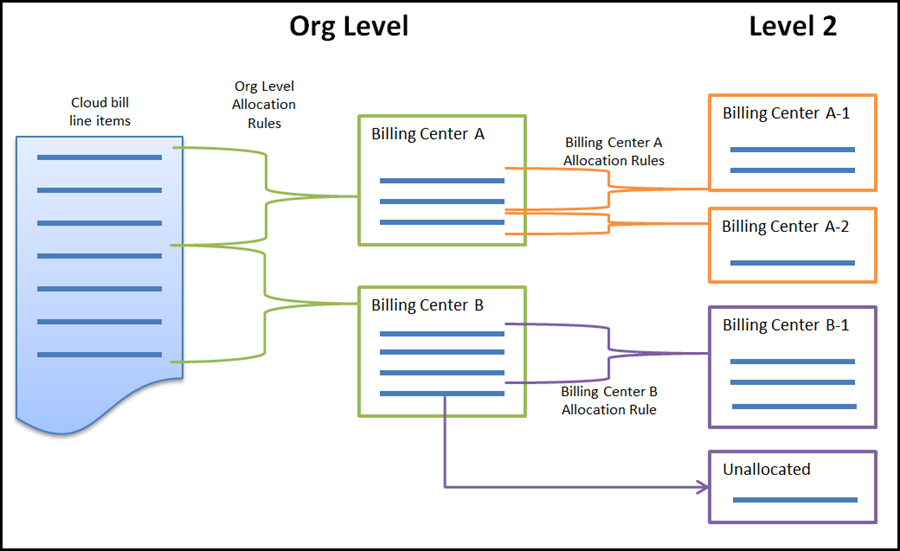How Billing Center Hierarchies Work

To accomplish this, each billing center has its own set of allocation rules, defining how the costs in that billing center are further allocated to its children. This is optional, so although each billing center can have a set of allocation rules, it may not.
For situations in which account-based allocation is exclusively used, this concept is relatively simple to understand - a given account cannot be allocated to a child if that account has not been allocated to its parent(s).
However, in scenarios that involve tag-based allocation, this rule does not quite hold true. This is because a given tag could have costs in any account, and it is not possible to know which account will have matching costs at the time of allocation rule definition.
The system will allow you to define any allocation rule at any level but when processing a bill and allocating costs, it follows the top down funnel rule. The use of tag-based rules and account-based rules is allowed, and the general concept of the costs funneling down will apply.
The user interface attempts to assist in creating tag-based allocation rules by showing only those accounts that are possible to be allocated to the current billing center given rules higher up in the hierarchy.